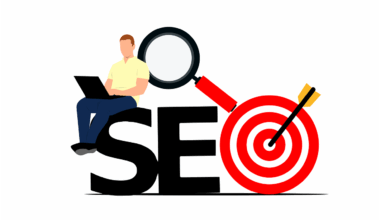Predictive Analytics for Enhancing Marketing ROI and Customer Retention
Predictive analytics has emerged as a powerful tool in the field of marketing, allowing businesses to evaluate data and predict future outcomes effectively. With insights derived from historical trends, customers’ behaviors, and other market dynamics, organizations can make informed decisions that lead to increased ROI. This type of analytics enables companies to identify crucial metrics, such as customer lifetime value, and implement strategies that enhance marketing efforts targeted at retaining existing customers. Utilizing predictive analytics, businesses can segment their customer base more effectively, tailoring campaigns to meet specific needs. By focusing on data-driven decision-making, marketing strategies become not only more sophisticated but also more relevant, yielding better engagement and retention rates. As consumers become increasingly discerning, having the capability to predict their actions becomes essential. Successful organizations understand that retaining a customer is often less expensive than acquiring a new one, making predictive analytics vital. The insights drawn from predictive models can drive improvements and optimize marketing budgets, maximizing returns while minimizing waste. Thus, effectively leveraging predictive analytics can revolutionize marketing efforts and strengthen customer loyalty.
Incorporating predictive analytics into marketing strategies transforms how companies interact with customers. Rather than deploying a one-size-fits-all approach, businesses can leverage analytics to customize their marketing campaigns effectively. By analyzing customer data, including previous purchase history and engagement patterns, organizations can better forecast customer preferences and tailor their outreach to match those inclinations. This precision ensures that marketing efforts resonate with the intended audience. Moreover, companies can prioritize high-value customers, implementing retention strategies that engage and nurture these relationships. Consistently satisfying existing customers increases the likelihood of repeat purchases and boosts brand loyalty. Furthermore, predictive analytics can assist in identifying potential churn risks, offering businesses the opportunity to intervene proactively and retain those customers. Examples include personalized email campaigns or loyalty incentives tailored to at-risk individuals. By focusing on maintaining existing customer relationships, businesses can enhance total customer lifetime value while minimizing acquisition costs. An adept application of predictive analytics serves not only to drive revenue growth but also builds a sustainable competitive advantage in today’s crowded marketplace. In this dynamic environment, ongoing analysis becomes a cornerstone of intelligent marketing and customer engagement.
The Impact of Predictive Analytics on Marketing ROI
Implementing predictive analytics can lead to substantial gains in marketing ROI. First and foremost, marketers can identify the channels that yield the highest return, thus allocating resources strategically. Rather than spending equally across all channels, businesses can focus their efforts on the most profitable avenues. For instance, if analytics indicate a higher engagement rate via email marketing, companies could increase investments there while reducing spending on less effective channels. Additionally, predictive analytics can streamline campaign objectives, ensuring that strategies are laser-focused on measurable outcomes. By setting clearer KPIs and monitoring them rigorously, marketers can optimize their campaigns in real-time. Furthermore, predictive insights allow for segmentation of messages based on previous interactions, improving engagement rates and overall effectiveness. Understanding customer behavior not only helps in shaping promotional strategies but also enables companies to craft personalized experiences, enhancing customer satisfaction. Ultimately, the ability to adapt campaigns based on data-derived insights cultivates brand loyalty, repeating purchases, and increases share of wallet. Consequently, businesses equipped with robust predictive analytics frameworks are better positioned to thrive in financial metrics related to ROI and customer retention.
Utilizing predictive analytics goes hand-in-hand with improving customer experience. When businesses can anticipate customer needs, they are better equipped to provide timely and relevant interactions. For example, analytics might reveal that a customer frequently purchases certain products at specific times of the year. Companies can leverage this information by sending targeted promotional messages or personalized recommendations ahead of anticipated purchasing cycles. This proactive engagement demonstrates attentiveness to customer preferences, fostering deeper connections. Moreover, with advanced segmentation, businesses can understand broader patterns amongst different customer groups, enhancing overall marketing effectiveness. Beyond sales, predictive analytics can elevate the quality of customer service. Real-time analytics capabilities enable organizations to respond to customer inquiries more quickly and accurately, ensuring that support teams are informed and ready to assist. Predictive data can also inform product development and enhancement plans based on customer feedback, leading to innovations that resonate with the target audience. In such ways, ongoing data analysis supports holistic marketing strategies, ensuring all aspects of customer relations are enriched. The result is a diverse set of benefits that significantly enhance both individual and organizational customer retention efforts.
The Integration of Technology in Predictive Marketing
To effectively harness predictive analytics for enhancing marketing ROI, businesses need to embrace innovative technologies. With cloud computing and machine learning becoming more accessible, companies can analyze vast amounts of customer data more efficiently than ever. Integration of these technologies simplifies the data-gathering process, enabling companies to focus on analysis and strategy formulation. Visualization tools also play a crucial role in making data actionable. By presenting data in a digestible format, teams can quickly grasp insights and trends without being bogged down by unnecessary complexity. Furthermore, integrating automation systems can enable organizations to react in real time to shifts in customer behavior. Triggered campaigns based on predictive analytics can enhance engagement significantly, ensuring that marketing efforts are timely and relevant. Additionally, artificial intelligence can supplement predictive analytics by constantly learning from new interactions, refining predictions and enabling companies to stay ahead of changing customer preferences. The marriage of predictive analytics with technology not only optimizes marketing spend but also helps maintain an agile business environment. Ultimately, incorporating these advancements reinforces a brand’s ability to build lasting customer relationships effectively.
As companies continue to navigate an evolving marketing landscape, the significance of predictive analytics for enhancing ROI and customer retention cannot be overstated. Agile organizations understand that staying ahead of market trends requires robust data analysis capabilities. The initial investment in infrastructure, training, and technology may seem significant. Still, the long-term benefits realized through increased efficiency, enhanced customer loyalty, and optimized marketing strategies far outweigh initial costs. Businesses that fail to prioritize predictive analytics risk falling behind as competitors leverage these insights to engage and retain customers better. Companies armed with a data-driven vision are equipped to meet customer expectations and adapt to market fluctuations. By adopting predictive analytics as a core competency, businesses can convert insights into action, ultimately transforming their marketing operations. As the digital landscape grows, the proliferation of data presents both challenges and opportunities. Thus, organizations should formalize their analytics frameworks, ensuring teams are aligned and informed. Reviewing results and refining approaches regularly will foster a cycle of continual improvement. In this digital-age competitive climate, success will increasingly hinge upon the ability to interpret and act upon data efficiently.
Conclusion
In conclusion, predictive analytics represents a paradigm shift in how businesses approach marketing ROI and customer retention. This strategic discipline not only enhances data interpretation skills but also creates actionable insights that drive business efforts toward customer satisfaction and loyalty. Understanding customer needs and adapting swiftly to changes improves engagement and retention while optimizing marketing expenditures. By continuously analyzing customer data, organizations can enhance decision-making processes, capitalize on high-value customer segments, and ultimately foster enduring relationships with clients. The integration of technology streamlines these processes, enabling businesses to respond proactively to customer dynamics. The commitment to leveraging predictive analytics can establish a strong competitive advantage, as businesses become more adept at navigating the complexities of consumer behavior. As predictive models evolve and data continues to grow, companies that commit to utilizing these tools will likely lead the pack in their respective industries. Engaging customers with tailored experiences, driven by predictive insights, will yield significant returns and deeper connections. Adopting such an approach will not only enhance marketing efficacy but will also facilitate long-term customer loyalty that underpins sustainable growth.
In the era of digital transformation, predictive analytics serves as a cornerstone for future marketing strategies. It allows businesses to adapt faster, reduce churn rates, and cultivate lasting relationships with clients. By integrating intelligent data analysis into their operational fabric, companies can ensure they remain competitive in a constantly shifting landscape. With a focus on actionable insights, organizations can deploy their marketing resources strategically, elevating their customer engagement and retention initiatives. As brands continue to leverage these insights, they will discover new opportunities for growth and development. Thus, embracing predictive analytics is not just a forward-thinking initiative; it is essential for survival in today’s marketplace. Organizations must continuously refine their strategies, keeping pace with technological advancements to reap the full benefits that predictive analytics has to offer. Ultimately, those able to predict customer needs while maintaining strong marketing strategies will excel. By blending experience with data-informed tactics, businesses can achieve their desired outcomes in ROI and customer retention, ensuring they thrive in both current and future markets. In conclusion, the promise of predictive analytics goes beyond numbers—it’s about creating powerful connections and delivering value-based experiences.


